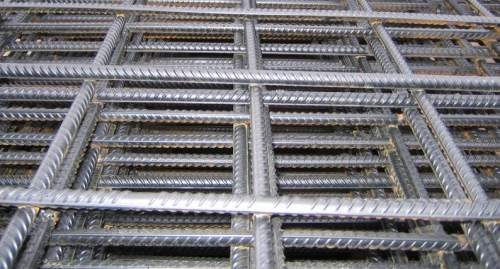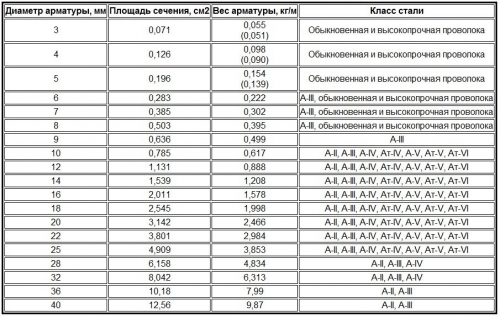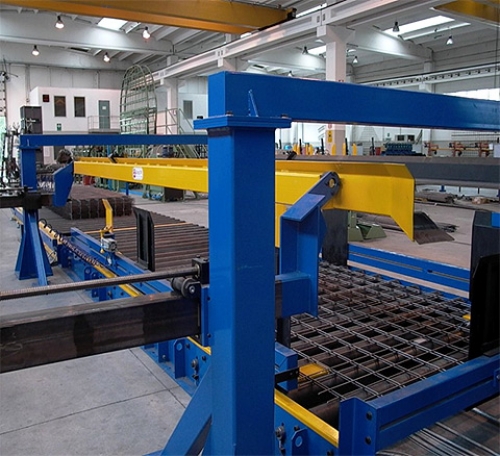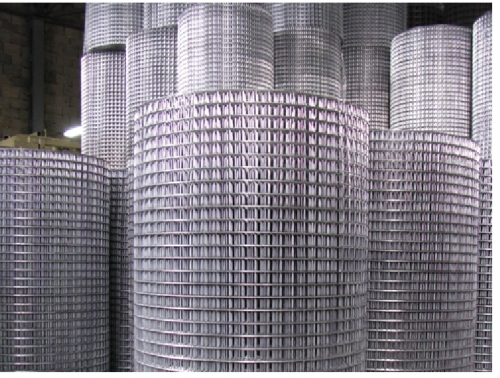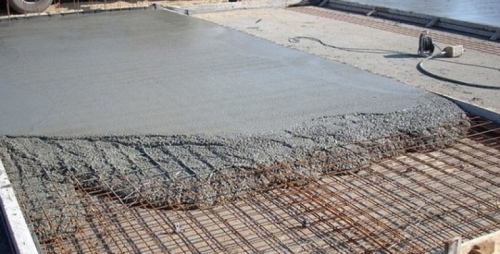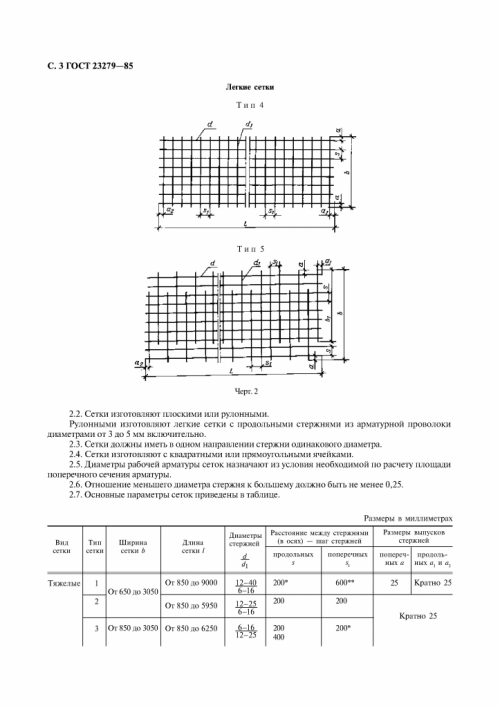Despite the abundance of materials and the so -called paradise, the market is not ...
|
|
The final stage of construction is work on the roof. Roofing work on decoration ... |
What is the difference between a floating field and an ordinary black base? ... |
Armored construction grid: description and application
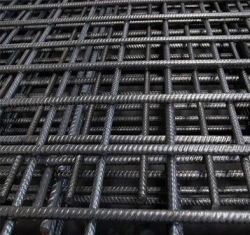
Today, a metal grid is a popular material used in any construction work. Demand is explained by the high characteristics and properties of the welded product, as well as a wide sphere of application. The article will talk about the reinforcing net.
Content:
- A little story
- Classification of the reinforcing mesh
- Production of reinforcing nets
- Called reinforcing mesh
- Halvanic coating of the reinforcing mesh
- Application of a reinforcing construction grid
- Standardization and verification of reinforcing nets
- Storage and transportation of reinforcing mesh
A little story
- The French began to strengthen building structures through metal rods in the second half of the 19th century. One gardener named Joseph was upset by constant losses that occurred due to the fragility of flower pots.
- This fact suggested him that an iron backbone can be inserted into the clay mass, and in 1867 he patented his invention. Although there is evidence that a few years earlier than plastering, the master from England built a house using reinforcement technology, but the patent did not begin to formalize.
- The entrepreneurial gardener did not stop at the goals achieved and continued experiments in the field of reinforcing various designs. As a result, he designed authorship for bridges, stoves, beams, etc. Of course, those products cannot be equal to the strength and other characteristics with modern structures, but, nevertheless, the beginning of reinforcement was supposed to be almost 150 years ago.
Classification of the reinforcing mesh
The reinforcing mesh is a set of perpendicularly located rods. Fixation of the reinforcement in places of contact is performed by point welding. The main task of this product is to increase the structural strength of individual products or structures. It is divided by the diameter and arrangement of the wire used, rods and many other parameters.
The diameter of the working reinforcement is determined by the class class:
- from 3 to 10 mm light (used in plastering);
- from 12 to 40 mm heavy (used for reinforcing concrete structures).
Depending on the size, the price of a reinforcing mesh varies from 4 to 200 rubles/m2.
The location of the reinforcement can be:
- longitudinal, transverse or distribution (constructive);
- longitudinal-transverse.
In most cases, the mesh cells have a square, rectangular, hexagonal or other shape. The dimensions of the cells of the reinforcing mesh can be 5x5 mm and 200x200 mm. If the wire diameter is up to 5 mm, then the nets are supplied in rolls, and the remaining products are produced in the form of a sheet (card).
The accuracy of welding varies:
- ordinary accuracy;
- increased accuracy.
Depending on the purpose, it happens:
- pantry It is used when pouring floors with concrete or sand-cement mixtures, for reinforcing brickwork, etc. Due to the small section of the wire used, the mesh is made both in rolls and maps. The width of the product is selected in accordance with the thickness of the brickwork, so for the internal walls (partitions) the size of the grid is 110-250 mm. For external walls, a grid is made with a width of 380 to 640 mm, which is suitable for masonry in one and a half, two and two and half bricks. The length of the product is usually 1 or 2 meters;
- reinforcing Provides increased strength and stability of each structure. It is used in the manufacture of whole reinforced concrete structures, the arrangement of the foundation. It is also used at those objects to which strict requirements are imposed. The width of the product is from 1 to 2 m, length up to 6 m;
- road serves for the installation of a roadway, pedestrian tracks, access roads (both new and designed for reconstruction). It is widely used to reinforce the floors of industrial facilities. The size of the cells of the welded reinforcing mesh is in the range from 50 to 200 mm, you should know, the larger the reinforcement step, the lower the strength properties and resistance to mechanical loads of the finished object.
The main advantage of the roll material over the cards is flexibility. The wire mesh is easily bending and cut, which allows you to give it any shape if necessary.
Many manufacturers produce nets not only corresponding to standard sizes, but also make products, changing the step and sizes of cells, for individual clients of the client.
Production of reinforcing nets
- For welding wire or reinforcement, special machines are used, which provide high accuracy of the work performed. After all, the finished product should have the correct shape, sufficient strength and aesthetic appearance visible deformations and irregularities are not allowed.
- The machine for welding reinforcing rods is fully automated, control takes place through a computer. The operator only monitors the correspondence of all the specified parameters and welding modes.
- For welding wire with a cross section of 3 to 12 mm, a high -precision machine is used, which works according to the contact welding method. The wire before serving to the working area of \u200b\u200bthe machine is straightened and cut to the required dimensions.
- Thanks to welding and the use of high -quality rods (without deviations in length and various contaminants), it is possible to achieve an impeccable result. Multi -electrode equipment allows accurate welding of rods without deformation, ensuring the flatness and strength of the finished product.
Steel for the production of reinforcing mesh
According to the requirements of the standard for the manufacture of nets as a working reinforcement, the following types are used:
- heavy nets Hot-rolled reinforcing steel of class A III, which has increased strength characteristics, with a cross section of 12-40 mm, as well as the AT IIIC class steel, strengthened by heat treatment in rolling production.
- light nets and distribution reinforcement in heavy grids Hot -rolled reinforcing steel of classes A I and A II.
- light nets Class BP-I wire, as a distribution (constructive) reinforcement B-I.
The use of this or that type of steel is based on the design documentation (depending on the operating conditions of the grid).
Called reinforcing mesh
- Separately, it is worth noting the drilled type of nets, where the wire has structural bends. Such nets are characterized by increased strength and resistance to shock loads. Therefore, they are used to reinforce building facilities with irregular loads, for example, in the mining industry or in the erection of buildings in the seismic danger zone.
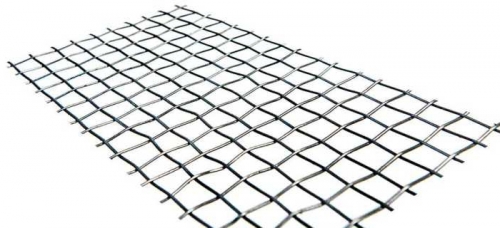
- The wavy structure of the wire is opposed to deformation, even with multidirectional efforts. It is worth noting that we are talking about mechanical strength. Anti -corrosion resistance and other properties are completely dependent on the raw materials used (types of low -carbon steel).
- Such a grid is used to sifting mountain material, reinforcing concrete structures, fencing of land, manufacture of aviaries, etc. Modern types of protection against negative influences, such as PVC or zinc coating, turn the mesh almost eternal material.
Halvanic coating of the reinforcing mesh
A metal grid is used to increase the strength characteristics of various structures and building materials. The net must steadfast all adverse operating conditions (atmospheric phenomena, temperature changes, wet environment, chemical exposure).
In this connection, it is produced with a zinc coating, which is applied with a galvanic way. The advantages of this material over nets made of neocyrected wire are as follows:
- a longer service life;
- confronts external influences;
- differ in high resistance to mechanical damage;
- non -exposure to corrosion processes;
- has a high degree of strength;
- it has an aesthetic appearance.
The galvanized mesh does not require special storage conditions, it is easily transported.
Application of a reinforcing construction grid
The nets have found wide application in the field of individual, industrial, agricultural and landscape construction. Depending on the presented strength indicators to the structure, the type of mesh is determined. They can be used:
- to strengthen reinforced concrete products, brick walls or porous blocks, roadbed, tunnels;
- when erecting bridges and supports;
- in the manufacture of concrete plates, panels and other products;
- when installing thermal insulation material;
- for reinforcing the plaster layer;
- when arranging warm floors, concrete floors, screeds;
- to strengthen the foundations;
- to create a frame for greenhouses and greenhouses;
- for the construction of fences, aviaries for animals and other fences;
- to strengthen the walls of ditches and pits.
- The calculation of the number of reinforcing mesh is calculated individually for each case.
Using this product will allow:
- reduce the production cycle, due to the exact geometric dimensions and the corresponding technical characteristics;
- save time (in comparison with manual viscous reinforcement) and metal rolling (lack of waste);
- improve the quality of the structure or product due to the increased strength properties of the grid;
- significantly reduce the installation time, since the product is completely ready to work.
Standardization and verification of reinforcing nets
- The production of nets is based on the current interstate standardization system. GOST 23279-2012 applies to all types of nets made of steel rods with a diameter of 3 to 40 mm inclusive. Some manufacturers produce products according to their own technical conditions under which a deviation is allowed according to GOST.
- Each batch of nets undergoes a check for quality, where strength, size, sediment of rods, rectilinearity of the structure, etc. are taken into account. So, to measure geometric sizes, in particular, the length, width is used by a special tool: metal ruler and roulette. The strength of the grid is checked by free fall from height to a solid surface.
- Check is made by random selection of cards or rolls. If the sample taken does not correspond to any indicator, then another sample is carried out. When confirming the marriage, the party goes to recycling.
- Each package is attached to information that indicates the weight, party number, production date and brief information about the manufacturer. Also, the accompanying documents indicate the technical characteristics that guarantee the quality of a type of reinforcing mesh.
Storage and transportation of reinforcing mesh
- For convenient transportation and movement of cards, they are packaged. The total weight of one package of a reinforcing mesh usually does not exceed 3 tons. Card fixation is carried out by means of soft wire at least 4 points, as for the roll mesh, it is tied in 3 places.
- A room for storing any type of nets should be dry with a normal temperature regime. Storing packages and rolls is carried out horizontally on wooden pallets.
- The height of the stack for cards should not exceed 2 meters, the rolls are stored in no more than 3 tiers. When loading and transportation, it is necessary to act according to the safety regulations, to observe precautions.

